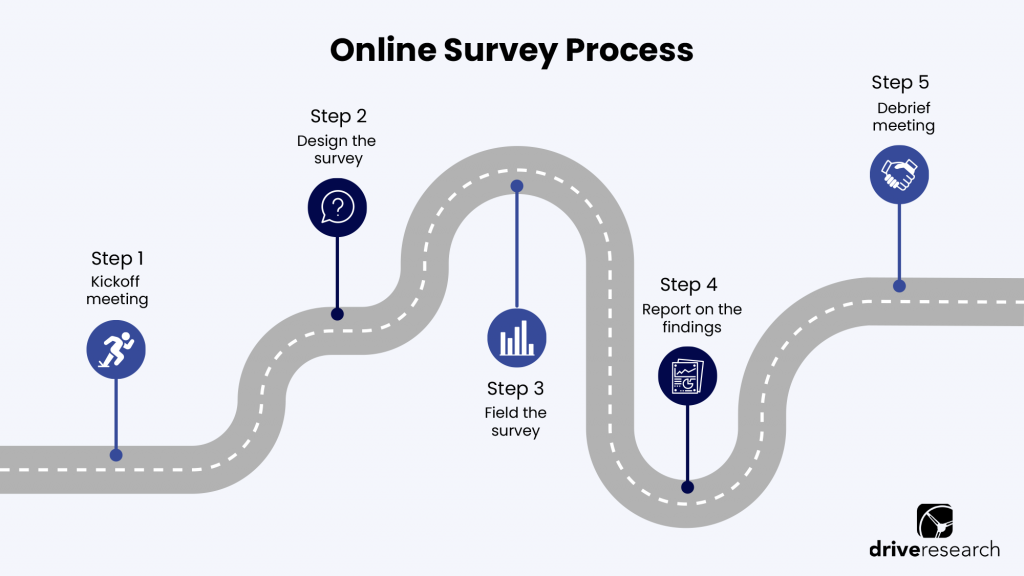
As human beings, we often make split-second decisions based on feeling and intuition, without taking the outcome or consequence into account.
We can’t always help it, we are emotional and empathetic creatures after all!
But, when it comes to making business decisions, it is crucial to take all external factors into account before taking any decisive action.
Through the process of data-driven decision-making (DDDM), organizations can ensure that their business goals and objectives are guided by cold, hard evidence.
Continue reading to find out what data-driven decision-making is, how it can benefit you and your business, and see some case studies on how it has brought success to brands across the globe.
What is Data-Driven Decision Making (DDDM)?
Data-driven decision-making is defined as using facts, metrics, and insights to guide strategic business decisions that align with goals, strategies, and initiatives.
It is a process that involves analyzing collected data through market research, and drawing insights, to benefit a business or organization.
At its core, data-driven decision-making allows for a better understanding of business needs by leveraging real, verified data, instead of just making assumptions.
Why Is Data-Driven Decision-Making Important?
Using action-driven data with market research is critical to the growth of a business.
You can either take a shot in the dark, or you can work towards business goals by leveraging analyzed data; which one sounds better to you?
Making business decisions with no real foundation can cause tremendous harm to your public and internal strategies.
For instance, DDDM is essential for data-driven marketing strategies. Consumer insights are often used to drive ad design, messaging, channels, and more.
In fact, 49% of marketing professionals use data-fueled strategies to improve customer outreach.
Though, the beauty of DDDM is that it has a positive impact on every area of your business.
- Improves customer retention. Utilize customer surveys to identify areas of satisfaction, dissatisfaction, Net Promoter Score, likelihood to switch, and other critical KPIs to assure customers are happy with your organization.
- Improves customer attrition. Rely on non-customer surveys to determine what drives prospects to use the products or services you sell. Understand things like sources of awareness, perception of your brand, and what competitors they are currently using.
- Improves employee satisfaction. With the help of an employee survey company, learn what areas your team wants to be improved. The insight will lead to cultural changes that have a direct impact on employee engagement and retention.
Key Steps in the Data-Driven Decision-Making Process
In order to get the best quality data, the following steps must be taken:
- Determine your objectives
- Write survey questions
- Collecting survey data
- Analyzing the results
- Act on the data
To assure the data you are using to make important decisions is accurate, consider working with an outsourced team.
Using a third-party market research firm is essential if you want reliable feedback. For instance, the team at Drive Research always follows these key steps to get the best results.

It’s important to note that the needs of the client will always influence the way in which these steps are taken, but this general order is always followed.
1. Determine your objectives
For any market research study, it is important to have clear goals and objectives in mind. And when working with a market research company, these will be discussed in a kickoff meeting.
This introductory meeting is also a great way for both the team and the client to get acquainted with each other.
Kickoff meetings cover a wide variety of topics.
No matter what’s discussed, there are certain factors that will always be covered in a kickoff meeting:
- Project objectives
- Key audiences to target
- Timeline review
- Reporting needs
- Additional questions
2. Survey design
Now that the project goals are clear, the market research team will begin to design and write the survey.
There’s more to writing a survey than ensuring questions are well-written.
A few recommendations from our online survey agency include:
- Keep it concise. If you’re going with an online survey, you won’t want to make it longer than 20 minutes. In fact, 10 to 15 minutes are ideal here. Respondents can lose interest fast, especially anything over 20 minutes.
- Change up the question style. Variety always plays a role in good market research. When asking questions, it’s important to ensure they’re not all formatted in the same way. This helps keep the respondent engaged.
3. Collecting survey data
After the survey is fully written and complete, it will be taken from its original document and programmed into an online survey platform.
Then, it’s onto fieldwork. This is the period of time when responses are collected. Typically, this phase lasts a couple of weeks depending on your timeline.
4. Analysis and customized report
The final two steps to any solid market research process include a full analysis and report of the research data.
Prior to the analysis, the survey data will have been cleaned. This process simply ensures only the highest-quality data made it through.
And then we’re onto the report.
A good market research report will cover:
- Review of the methodology used
- Coverage of main themes
- Additional context
- In-depth client suggestions
Though, based on your budget, there are ways to lower or increase the cost of the final deliverable.
While a report is key for any market research project, it’s especially important for DDDM.
Our research team will spend a significant amount of time reviewing the report with the client. Going over each section of the report will ensure all the main points are understood.
Not only will our report give a rundown of what we found, but we’ll also include action-driven recommendations for the client to follow. In the case of consumer data, a solid report would identify sources of awareness so the client can target specific marketing channels.
Advantages of the Data-Driven Approach
Making decisions based on verified data helps everyone in your organization, from human resources to sales, and from marketing to leadership.
Here are three benefits our market research company finds when making critical business decisions with data-driven insights.
1. Making confident decisions
One of the greatest advantages to come with data-driven decision-making is the ability to make decisions more confidently than ever before.
Whether you’re deciding to move into a new market, launch a new product, or discontinue an old one, the impact of your decision will be much clearer if you have verified data at your disposal.
It is why many businesses (from startups to Fortune 500s) invest in market research for new product development.
2. Save money and increase ROI
Secondly, there’s a good chance you can save on costs if you rely on data from the get-go.
Instead of taking an approach where you guess and see what happens, with data-driven decision making you’re already up to date with all of the mainstream trends.
You can operate more efficiently and make decisions that are in line with what you know consumers need, not what you think they need.
For instance, ad concept testing surveys can provide feedback on the messaging, design, layout, and other key components of your advertising campaigns before they launch.
Doing so assures your target audience will react and resonate with your marketing messaging as you intended.
Our advertising and marketing research company talks more about ad concept testing in the video below.
3. Become a proactive decision-maker
Last but certainly not least, data-driven decision-making turns you and your company into proactive decision-makers.
Too often, we find ourselves reacting to events in our lives that could have easily been avoided if only we had been willing to identify them beforehand.
By taking all pieces of information into account when coming to a decision, you’re being proactive and taking all necessary steps to ensure that you won’t run into any roadblocks in the future.
Being prepared with an arsenal of data can save you a lot of time in the long run.
4. Unite your team
Data-driven decision-making can also be used to promote your internal team.
When all members of your team are aligned with the proper data, everyone is on the same page. As a result, employees will work together instead of separately to meet company goals.
Not only will this unite your team, but DDDM naturally works as a learning process. Employees can grow together as they begin to implement the data found.
What’s more, internal DDDM also creates a sense of trust between employees and leadership. When both teams are informed with accurate data, there’s better communication and outcomes.
This trust goes a long way in increasing employee retention for a thriving workplace.
5. Create personal connections with buyers
One of the greatest benefits of data-driven decision-making is the connection made with clients and customers.
By consistently measuring market data, businesses will always be on top of the trends within their consumer base.
As a result, they understand what drives them. And understanding the driving factors behind consumer preferences isn’t the only benefit here.
As we mentioned earlier, brands can work off of these relationships to create meaningful, personalized marketing campaigns.
The more consumers connect with a campaign, the more they’re likely to invest. In fact, 90% of leading marketers say personalization significantly contributes to marketing profitability.
Examples of Data-Driven Decision Making
Example #1: Lufthansa
With over 500 subsidiary companies, the Lufthansa Group is the second-largest airline company in Europe in terms of passengers carried.
It brings in billions in revenue, but at one point, there was no uniformity in terms of data analytics across the many subsidiaries of this massive company.
However, after deciding to use one analytics platform company-wide, efficiency skyrocketed by 30% across the company.
Decision-makers across the company’s subsidiaries were able to make better-informed decisions after careful data collection and analysis, which allowed business objectives to be streamlined and more efficient.
By creating a data culture, Lufthansa empowered its employees to make better, more informed decisions.
Example #2: Walmart
During the summer of 2004, Hurricane Frances was barreling toward the Florida peninsula.
To understand what their customers needed when preparing for the storm, Walmart used data from stores in locations that had experienced similar environmental disasters in the past to analyze any areas where purchasing may have seen spikes compared to normal times.
The findings?
Pop-Tarts and beer were two unique items that saw dramatic increases in demand during times of storm preparation.
As a result, Walmart was able to send an increased amount of these items to stores in the path of the hurricane.
By using verified data, Walmart was able to increase profit while aiding those in need, instead of guessing.
Key Factors When Making Data-Driven Decisions
There are at least two key factors to consider when using data-driven decision-making:
- The data is accurate and relevant
- The data encourages others to think critically
Data is accurate and relevant
Firstly, you have to ensure that your data is not only accurate but also relevant to what you are looking to achieve with your goals.
Making decisions based on inaccurate data can have huge implications on your business outcomes, and analyzing data that isn’t relevant to your goals just adds to the jungle of inefficiencies that you and your organization could be facing.
Working with a third-party online survey company can help assure your insights are close to 100% accurate with data quality and cleaning checks.
Data encourages others to think critically
And secondly, your organization needs to ensure that there is a ‘data culture’ that encourages employees to think critically.
In today’s world, it is simply not enough to just have access to accurate, relevant data.
Having a culture that pushes people to be curious about the data and think critically about how to use and succeed with the data is the other piece of the data-driven decision-making puzzle.
Recommended Reading: 11 Types of Market Research to Consider
Final Thoughts
Data-driven decision-making or DDDM for short is the process of gathering insights and other figures to make informed business decisions.
DDDM benefits all aspects of a company. From client relationships to consumer outreach to employee satisfaction, it should be at the core of all strategic decisions.
Though it is critical the data used is both accurate and relevant. Working with a market research company like Drive Research can help you to feel confident the insights gathered can be trusted to improve strategic thinking and generate new ideas.
Work With Drive Research To Make Data-Driven Decisions
Drive Research is a national market research company located. Our team conducts both qualitative and quantitative market research services to provide organizations with the insights they need to make data-driven decisions.
Interested in learning more about our market research services? Contact us today!



